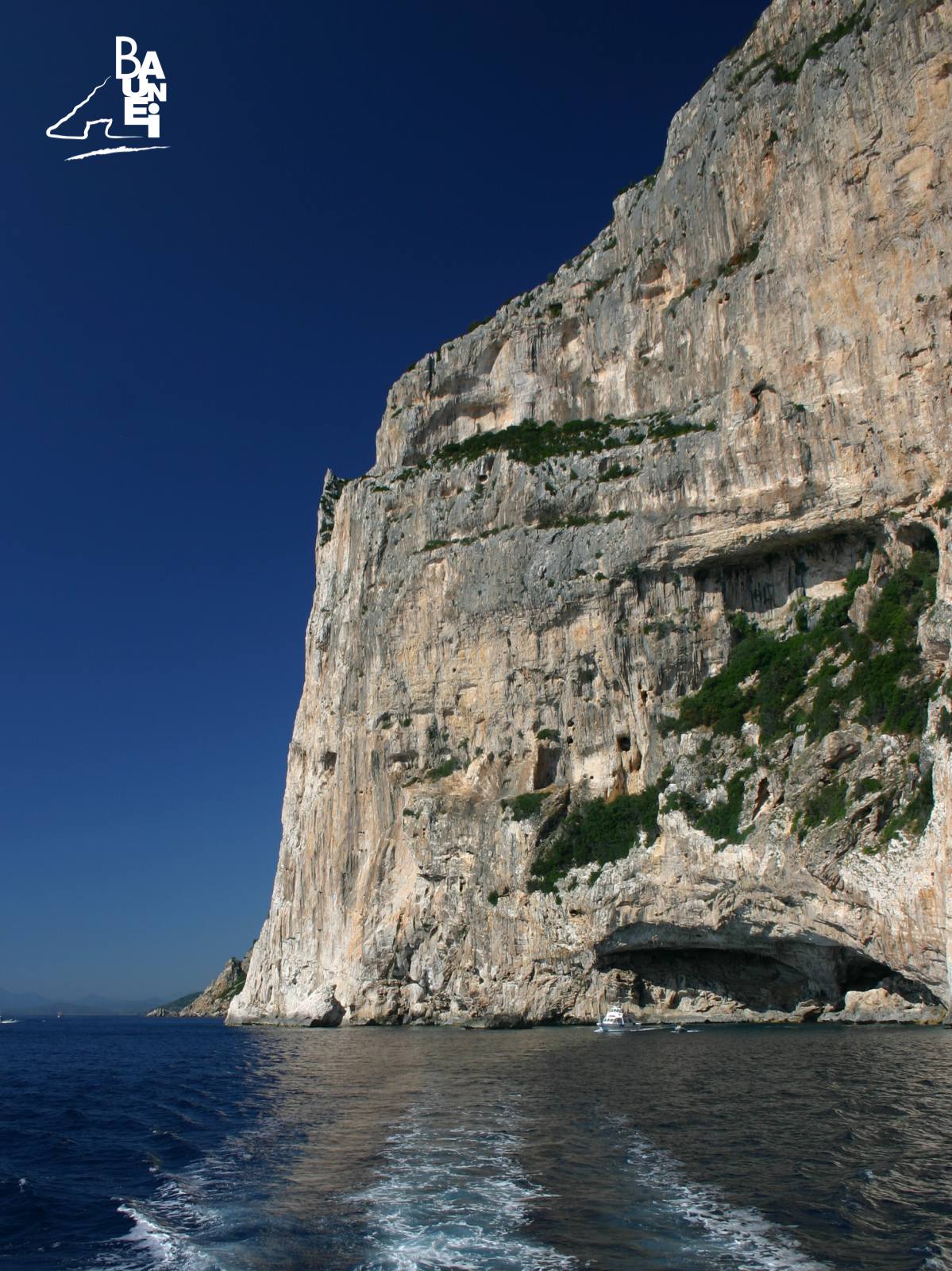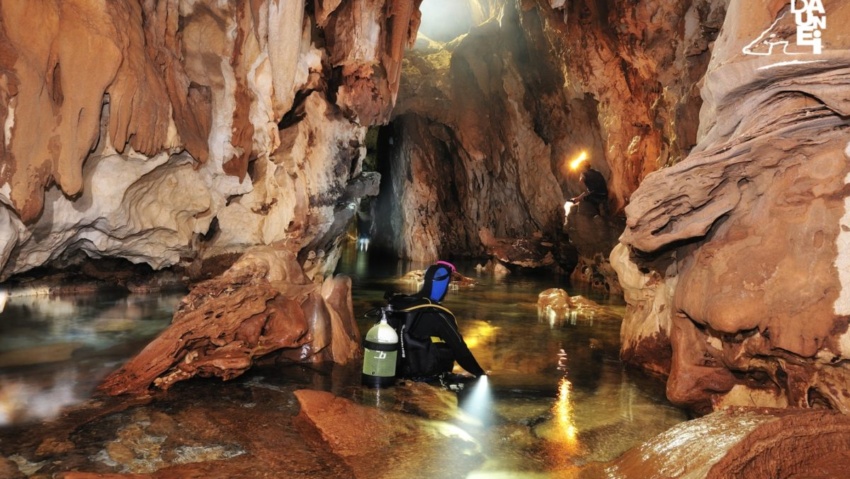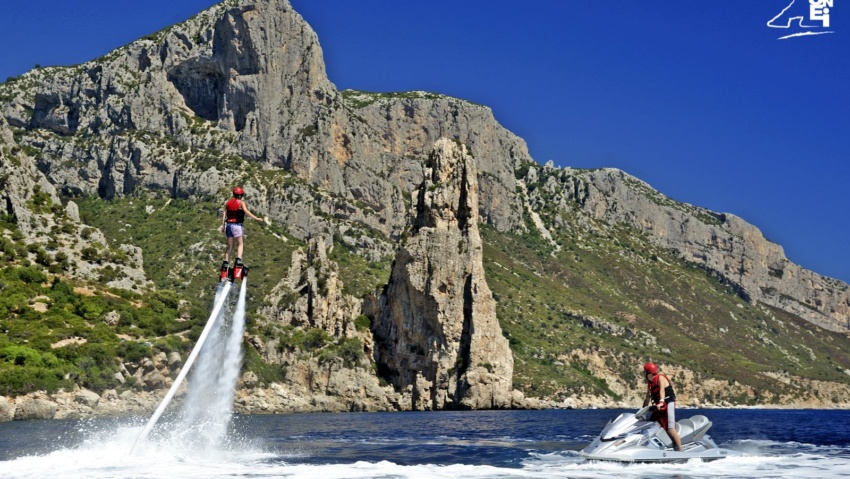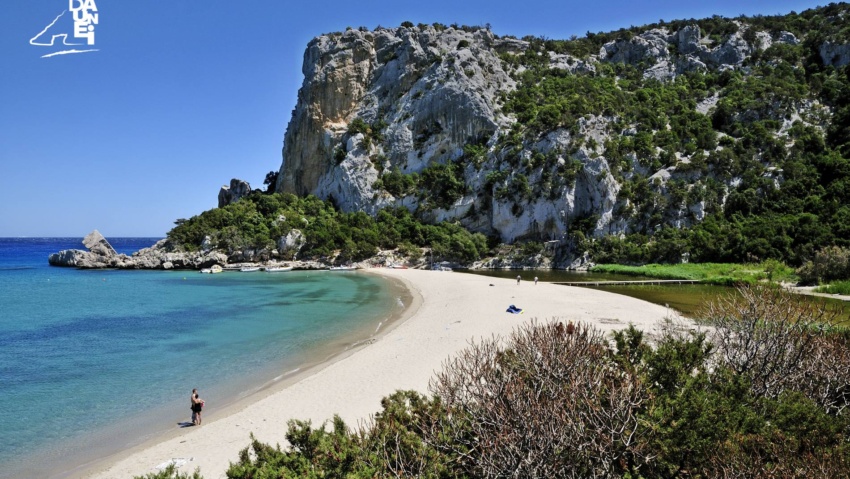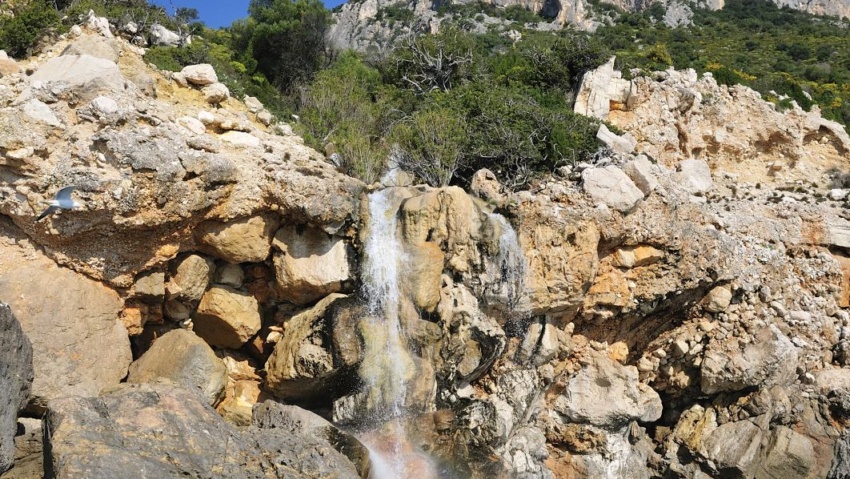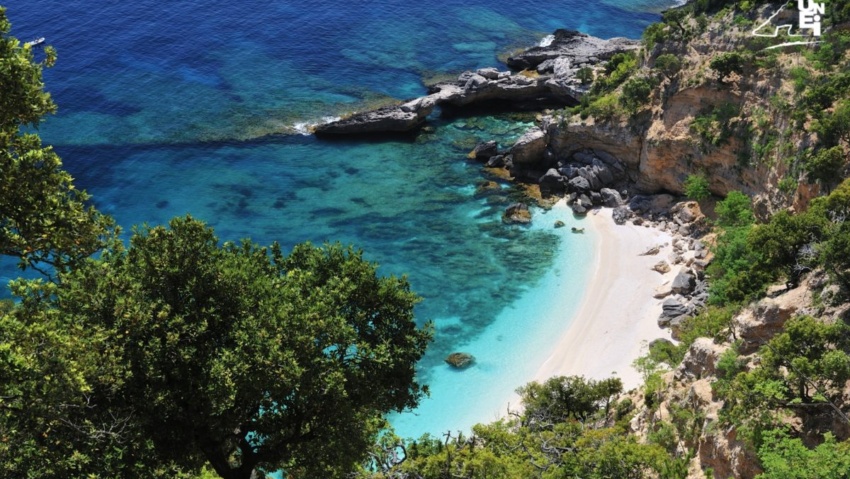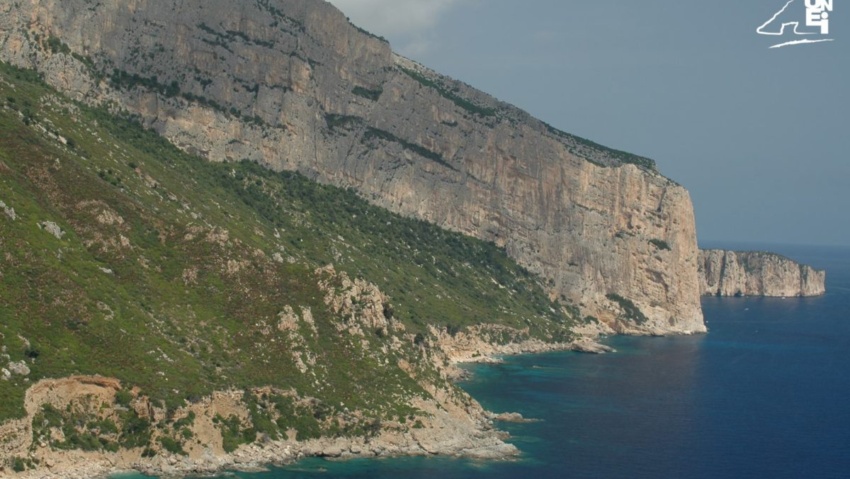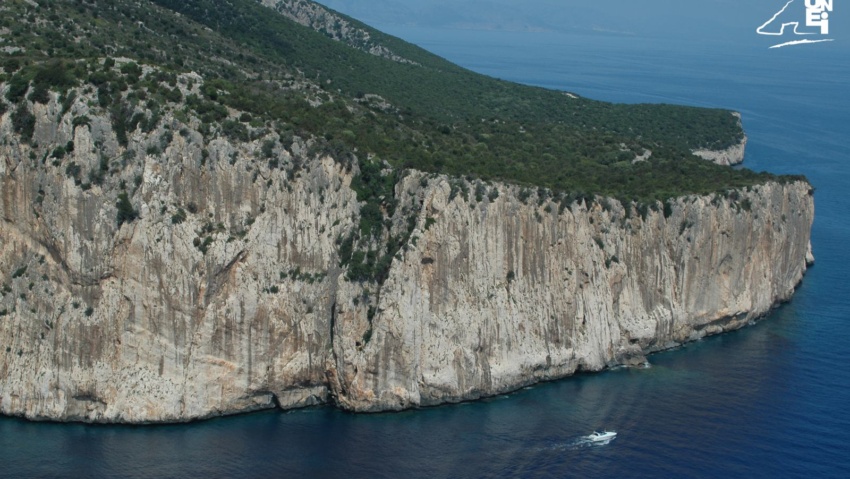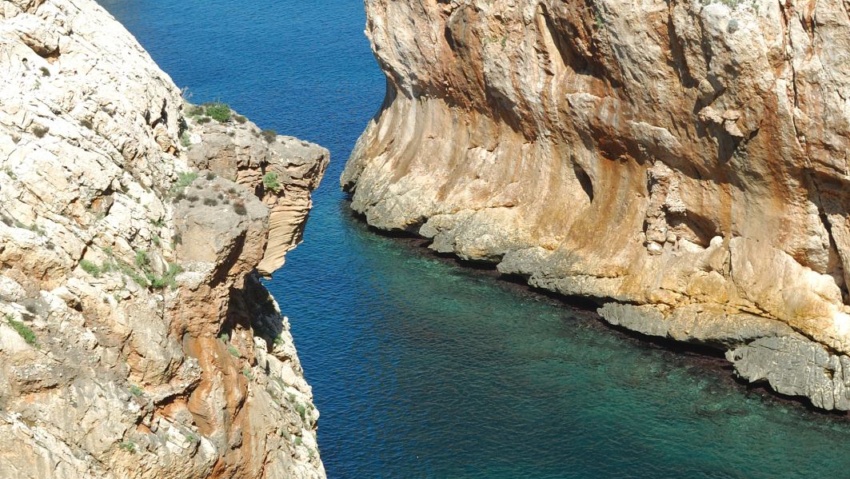La Grotta dei Colombi (Cave of Pigeons)
On the stretch of coast north of Fòrrola, the cliff suddenly becomes a sheer drop overlooking the sea, more than 300 metres high. At the foot of this striking wall, a destination for free climbers in the mood to test their skills, is the “Grotta dei Colombi”, which owes its name to a colony of pigeons who stay there throughout the year (and painstakingly share the areas facing the cliffs with a large colony of Eleonora’s Falcons, which nest on these walls).
The “Grotta dei Colombi” is only accessible by sea and in order to see the stunning majesty of the vault up close, it is necessary to sail very close to the cliff. In particularly calm seas, it is possible to climb onto the rock to reach the inside of the cave, which is 7 metres above sea level. The cave is only one of many karst cavities on the Baunesis coast. Erosion caused by rainwater that infiltrates the deeper layers of rock and erodes the limestone is responsible for the formation of this kind of cave. From the Grotta dei Colombi onwards, the coastline remains high, falling sheer into the sea, up to the promontory of Capo Monte Santu, after which it slopes down sharply until it is no higher than a few metres, then rises up again to almost 500 metres at Punta Salinas.
Along the coastline there are also a number of underwater caves, which testify to ancient geological eras in which the sea level was different from what it is now. One of these underwater caves (the entrance is 12 metres below sea level), several kilometres long, is located a few miles north of the Grotta dei Colombi, beyond Capo Monte Santu. The cave was named “Utopia” by the cave divers who discovered it in the sixties; “Utopia” was explored by a team of professionals, led by the chemist Markus Schafheutze, which arrived specially from Germany in the mid- 1990s. In the summer of 2002, during one of the explorations that took place over the years, the German cave divers discovered the existence of a room full of stalactites and stalagmites located at a depth of 80 metres below sea level. Since stalactites and stalagmites are concretions that only form in the presence of air (due to a chemical reaction of calcium bicarbonate, which turns into calcium carbonate, thereby solidifying, when it comes into contact with the atmosphere), it follows that their presence in rooms that are now flooded with seawater shows that, at one time, these caves were above sea level.
